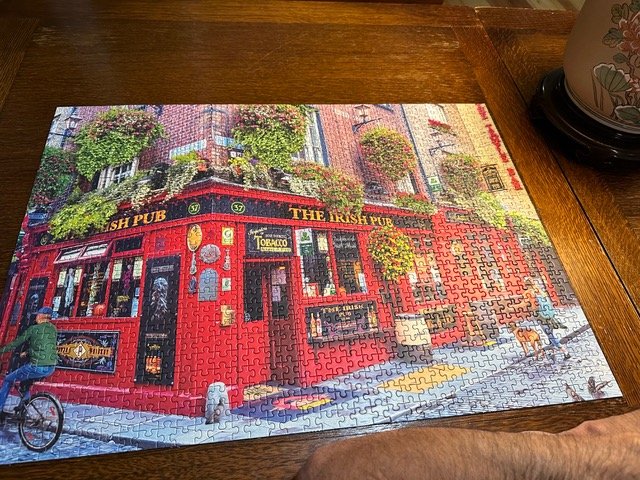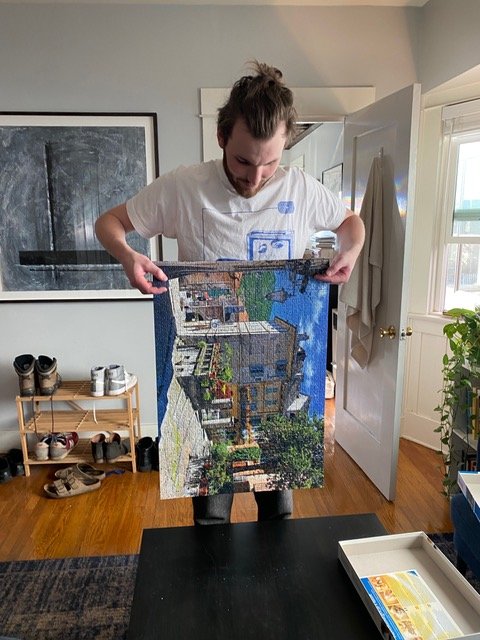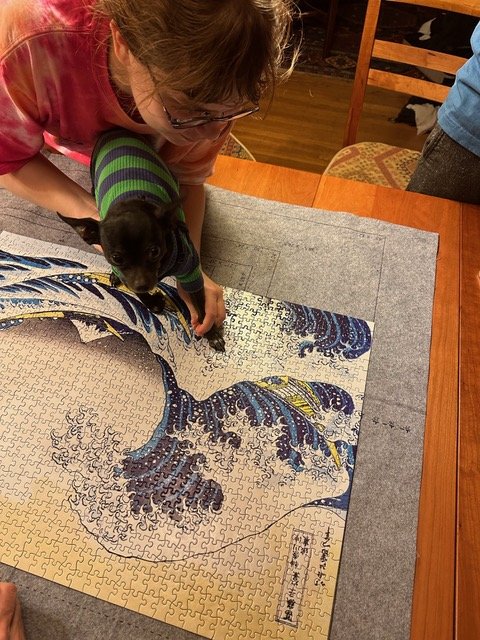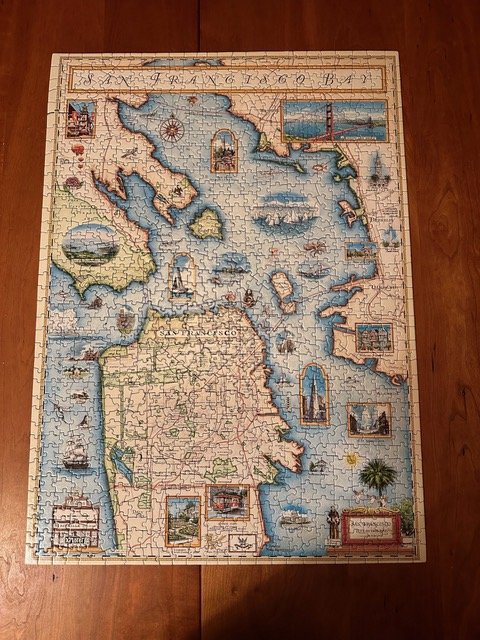Good Posture Doesn’t Prevent “Puzzle Palsy”
Why are Physical Therapists, Health Blogs and FitBits always nudging you to get up and move for a few minutes while you are working?
Let me enlighten you…
Just over 1 year ago, my husband (aka, the puzzle Nazi) and I went to the mountains for my birthday weekend. The snow was not good for cross country skiing or snowshoeing and it was windy, so we stayed in our cute rental cabin and worked on a 1500 piece jigsaw puzzle (a favorite pastime!). The puzzle Nazi’s rules are that you look at the lid or photo only ONCE, and then everything is done by skill and recall. “Anything else is not as much fun.” Right.
The work surface was a bit low, but I tried my physical therapist best to mind my posture and not slump; and my Pilates teacher best to use my core muscles to support me. I was shocked when I awoke the second morning and heard my left foot go “flop, flop” when I walked to the bathroom. I had a completely dropped foot! I had zero ability to lift my foot off the ground or pull my toes towards my face. I couldn’t even turn on any muscles in my foot or ankle to see the tendons.
To an orthopedic PT, this is very serious and potentially scary business. Diagnostic possibilities running through my head that morning included a herniated lumbar disc, peripheral nerve injury, brain conditions such as Multiple Sclerosis and nerve conditions such as Amyotrophic lateral sclerosis (ALS).
Over the course of a few months, I had 2 sets of X Rays, 1 MRI, 1 EMG, saw 5 physicians and 1 acupuncturist, had one “yard sale” fall in the street (tripped on my floppy foot – MOST embarrassing, and painful for months!), had 2 syringes of bloody fluid pulled out of my banged up knee from the fall, and was challenged to do my rehabilitation and Pilates to get my strength back.
Who knew that “Puzzle Palsy” was a thing??!! Any compression on a nerve can cause temporary dysfunction of that nerve. You fall asleep leaning on your elbow and you wake up with numbness or an inability to move your hand, for example. The longer and more severe the pressure, the longer it can take to get sensation and or function back. Carpal Tunnel disorder is a common form of peripheral nerve palsy. The tunnel in your wrist where the nerves to part of your hand pass through can get tight from repetitive use (typing or using a cell phone, for example) and cause compression on those nerves. The compression on a nerve can cause changes in sensation (numbness, tingling), cramping, and muscle weakness.
Return of nerve function can vary from minutes to days to months. For some injuries, function never returns to normal. I was lucky. The compression was not long-lived, I had good treatment with acupuncture and therapeutic exercise; I was very lucky.
So the moral to the story is…
Don’t sit too long, even with good posture. Be careful while sitting on a chair with a firm surface that can press into your leg or sitz (sitting) bones for long periods of time. It is important that you remember to take breaks and move your body around. Also, don’t be afraid to make your own rules for puzzling (don’t tell him, but sometimes I do sneak a peek at the cover when I am at a puzzle impasse!).
Here’s to functioning nerves and the eradication of “Puzzle Palsy”.






